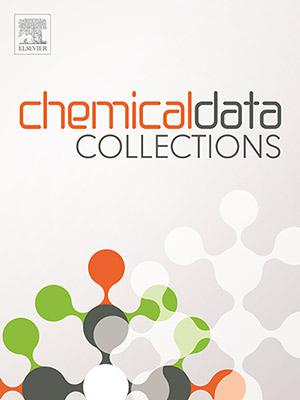吲哚唑衍生物作为葡萄糖苷酶和淀粉酶制剂的合成、生物学和计算分析
IF 2.7
Q2 Chemistry
引用次数: 0
摘要
合成了吲哚唑类似物(1-14),利用1HNMR、13CNMR和HREI-MS等多种光谱技术对其结构进行了分析,并对α-葡萄糖苷酶和α-淀粉酶进行了评价。与标准药物阿卡波糖(IC50 = 38.45±0.80 &)相比,所有衍生物均表现出更好的α-葡萄糖苷酶和α-淀粉酶抑制潜力,IC50值分别为9.80±0.60 ~ 47.20±0.10µM(对α-葡萄糖苷酶)和4.70±0.40µM(对α-淀粉酶);11.12±0.15µM)。α-葡萄糖苷酶类似物7 (IC50 = 9.80±0.60µM)和α-淀粉酶类似物1 (IC50 = 14.70±0.40µM)表现出最强的抑制潜力。此外,对最有效的分子-7的结合相互作用进行了分子对接研究,酶的活性位点主要受到二氯基团存在的影响。该基团增强了芳香环上的吸电子(EW)效应,在葡萄糖苷酶抑制的情况下增强了疏水相互作用。另一方面,分子-1含有一个给电子基团(EDG),增加了总电子密度,从而在淀粉酶抑制的情况下促进与酶的活性位点更强的相互作用。本文章由计算机程序翻译,如有差异,请以英文原文为准。

Synthesis, biological and computational analysis of indazole derivatives as alpha-glucosidase and alpha-amylase agents
Indazole analogues (1–14) were synthesized, elucidated their structure by using various spectroscopic techniques like 1HNMR, 13CNMR and HREI-MS and evaluated against α-glucosidase and α-amylase enzymes. All derivatives demonstrated better α-glucosidase and α-amylase inhibitory potential with IC50 value ranging from 9.80 ± 0.60 to 47.20 ± 0.10 µM (against α-glucosidase) and 4.70 ± 0.40 to 4.70 ± 0.40 µM (against α-amylase) as compared with the standard drug acarbose (IC50 = 38.45 ± 0.80 & 11.12 ± 0.15 µM, respectively).
In case of α-glucosidase analogues 7 (IC50 = 9.80 ± 0.60 µM), while in case α-amylase analogue 1 (IC50 = 14.70 ± 0.40µM) show most potent inhibitory potential. Furthermore, molecular docking studies were carried out for the binding interaction of the most potent molecule-7, with the enzyme’s active site is primarily influenced by the presence of the di‑chloro group. This group enhances the electron-withdrawing (EW) effect on the aromatic ring, which strengthens hydrophobic interactions in the case of glucosidase inhibition. On the other hand, molecule-1, which contains an electron-donating group (EDG), increases the overall electronic density, thereby facilitating stronger interactions with the enzyme’s active site in the case of amylase inhibition.
求助全文
通过发布文献求助,成功后即可免费获取论文全文。
去求助
来源期刊

Chemical Data Collections
Chemistry-Chemistry (all)
CiteScore
6.10
自引率
0.00%
发文量
169
审稿时长
24 days
期刊介绍:
Chemical Data Collections (CDC) provides a publication outlet for the increasing need to make research material and data easy to share and re-use. Publication of research data with CDC will allow scientists to: -Make their data easy to find and access -Benefit from the fast publication process -Contribute to proper data citation and attribution -Publish their intermediate and null/negative results -Receive recognition for the work that does not fit traditional article format. The research data will be published as ''data articles'' that support fast and easy submission and quick peer-review processes. Data articles introduced by CDC are short self-contained publications about research materials and data. They must provide the scientific context of the described work and contain the following elements: a title, list of authors (plus affiliations), abstract, keywords, graphical abstract, metadata table, main text and at least three references. The journal welcomes submissions focusing on (but not limited to) the following categories of research output: spectral data, syntheses, crystallographic data, computational simulations, molecular dynamics and models, physicochemical data, etc.
 求助内容:
求助内容: 应助结果提醒方式:
应助结果提醒方式:


